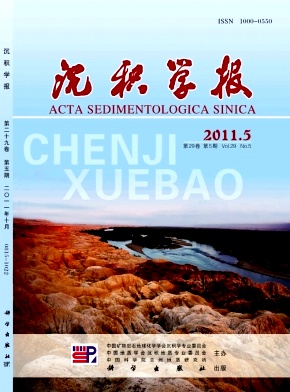Genetic Type of Oilgas Accumulation Paleogeomorphology and Favorable Conditions for Petroleum Accumulation: Taking the paleogeomorphology of PreJurassic in Shangliyuan area, Ordos Basin as an example
- Received Date: 1900-01-01
- Rev Recd Date: 1900-01-01
- Publish Date: 2011-10-10
-
Key words:
- impression method
Abstract: Nowadays, we have a common consideration that the PreJurassic palaeogeomorphology is the important basis which control the Yan9Yan10's reservoirs of the lower part of the Yan'an Group. Before, for the lower quality of seismic data and less wells' data, we recovered the palaeogeomorphology from the aspects of terrain's height, slopes and valleys, however, when the reservoirs were on the development stage, the aforementioned palaeogeomorphic characterization was too macro, especially, it was too simple and coarse for the palaeogeomorphic positive landscape, which resulted in a difficulty to master the distribution law of the PreJurassic reservoirs, and restricted the Jurassic reservoirs' exploration and development, thus, it was urgently to have a fine palaeogeomorphic characterization for the PreJurassic.
Under the conditions of the increasing exploration data and higher quality data, the requirements of finely characterization the PreJurassic palaeogeomorphology has achieved. According to the formation marks of the Yan8, Yan9, Yan10 of the lower Jurassic and Fuxian group in Shangliyuan area, eastern Gansu Province, recognized and correlated the lower Jurassic and Fuxian Formations, based on the characteristics of the later Triassic structure movement and early Jurassic deposition environment, we used the stratum thickness impression method (Yan9 add Yan10 and add Fuxian formations' thickness) to rebuild the preJurassic palaeogeomorphology of Shangliyuan area, eastern Gansu Province. There were six landscape types: valleys, slopes, highlands, remnant ridges and remnant earthen mounds of the palaeogeomorphology, the specific configuration was the first degree GanShan ancient river distributed from west to east, and the second Western Qing ancient river laid in south of the study area and flowed northwards into GanShan ancient river, the Jiyuan and Yanwu high lands, respectively, located in the north and south of the study area, the Jiyuan south slope and Yanwu north slope developed in the transitional zone between the high lands and the valley, furthermore, there were interriver mounds in the center of the first degree ancient valley and there were second landforms of remnant mounds and ridges in the slope.
On the above basis, we put for ward an oil accumulation palaeogeomorphology conceptions, that was, the palaeogeomorphology could control and organically combine the reservoirs' accumulation elements, and made it form an organic reservoirs' deployment conditions, eventually, had a crucial affection on reservoirs' accumulation. The results showed that three types' reservoirs "remnant ridges, remnant earthen mounds and interriver mounds" occupied 80% in all the Lower Jurassic reservoirs in Shangliyuan area, eastern Gansu Province, associated with the distribution characteristic and formed law of the Lower Jurassic reservoirs, we considered the remnant ridges, remnant earthen mounds and interriver mounds were the main oil accumulation ancient landscapes. On the principle of "the present is the key to the past", we studied the characteristics of modern erosion landscapes and analyzed their genetic models, then divided the three main oil accumulation landscapes to three genetic models: river robber, river transformation and watershed erosion. The oil accumulation ancient landscapes made the reservoirs' formed models were led by structure and controlled by lithology, and the advantageous reservoirs' formed conditions of the oil accumulation ancient landscapes to the Lower Jurassic reservoirs was: ① differential compaction small amplitude anticline and cove structure came from rigid oil accumulation palaeogeomorphology with its upper Yan’an group “soft stratum”; ② the oil accumulation palaeogeomorphology easily to form river sandstone division and drape sandstone capes, then formed isolated lens reservoir sandstone.
We applied the oil accumulation palaeogeomorphology conceptions to divide the oil accumulation palaeogeomorphology types of the PreJurassic in Shangliyuan area, eastern Gansu Province, and discussed the their geneses and analyzed the favorable reservoirs' formed conditions, the purpose was to suggest a theory foundation and technical support on the exploration and development for the Lower Jurassic reservoirs in Ordos basin, meanwhile, provided studying ideas and methods for palaeogeomorphology reservoirs, and enrichment and supplement to the research theory of these reservoirs' types.
| Citation: | LI Shutong. Genetic Type of Oilgas Accumulation Paleogeomorphology and Favorable Conditions for Petroleum Accumulation: Taking the paleogeomorphology of PreJurassic in Shangliyuan area, Ordos Basin as an example[J]. Acta Sedimentologica Sinica, 2011, 29(5): 962-969. |






 DownLoad:
DownLoad: